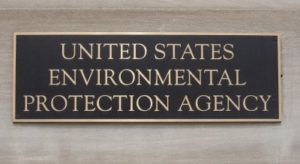EPA Administrator Scott Pruitt’s first draft Strategic Plan (covering the years 2018 to 2022) is built around what Pruitt has said is the Agency’s core mission. That mission, one of Pruitt’s three strategic goals, is summarized in the draft this way:
“The Agency will focus on speeding the cleanup of Superfund and brownfields sites, and will use a top ten list of sites to advance progress on Superfund sites of particular concern. We will work with states to more rapidly approve state implementation plans for attaining air quality standards, reducing contaminants that can cause or exacerbate health issues. We will achieve clean and safe water by updating aging infrastructure, both for drinking water and wastewater systems. And EPA’s top priority for ensuring the safety of chemicals in the marketplace is the implementation of the new Frank R. Lautenberg Chemical Safety for the 21st Century Act, which modernizes the Toxic Substances and Control Act (TSCA) by creating new standards and processes for assessing chemical safety within specific deadlines.”
The draft’s two other strategic goals are:
- Cooperative federalism—rebalancing the power between Washington and the states to create tangible environmental results for the American people.
- Rule of law and process—administering the law, as Congress intended, to refocus the Agency on its statutory obligations under the law.
Priority actions
Under those strategic goals, the draft lists five priority goals:
- Reduce the number of nonattainment areas under the national ambient air quality standards.
- Increase the percentage of water infrastructure projects funded through EPA grants, loans, or public-private partnerships that achieve or maintain compliance.
- Make additional brownfields sites ready for anticipated use (RAU) and additional Superfund sites RAU site-wide.
- Complete (1) EPA-initiated TSCA risk evaluations for existing chemicals, (2) TSCA risk management actions for existing chemicals, and (3) TSCA premanufacture notice final determinations in accordance with the timelines set forth in the statute.
- Increase the amount of non-EPA resources leveraged by projects receiving EPA infrastructure investments.
- Accelerate permitting-related decisions.
Certainty for regulated communities
The plan also echoes a frequent Pruitt assertion that the EPA needs to implement policy, conduct rulemaking, and otherwise execute its statutory responsibilities and authorities in ways that provide consistency and certainty to the regulated community.
“EPA will undertake a variety of efforts to ensure that consistency in application [of laws and regulations] is evaluated and addressed,” the strategy states. “It is as important to apply rules and policies consistently as it is to create certainty by meeting the statutory deadlines that are required for EPA’s actions.”
Climate not a mission, core, or otherwise
The draft does not contemplate applying either consistency or certainty to the issue of greenhouse gases or climate change, neither of which is mentioned in the draft. Under the direction of the White House, Pruitt and the EPA are moving to eliminate the Obama EPA’s Clean Power Plan (CPP) for existing fossil-fuel power plants. The CPP was the cornerstone regulation the previous administration developed to do its part in limiting the rise in the earth’s temperature. In June 2017, President Donald Trump announced that the United States is withdrawing from the Paris Climate Accord, under which virtually every nation in the world committed to take actions to limit the rise in the global average temperature to 3.6 degrees Fahrenheit.
The Draft FY 2018-2022 EPA Strategic Plan is available at http://www.regulations.gov, Docket EPA-HQ-OA-2017-0533.

